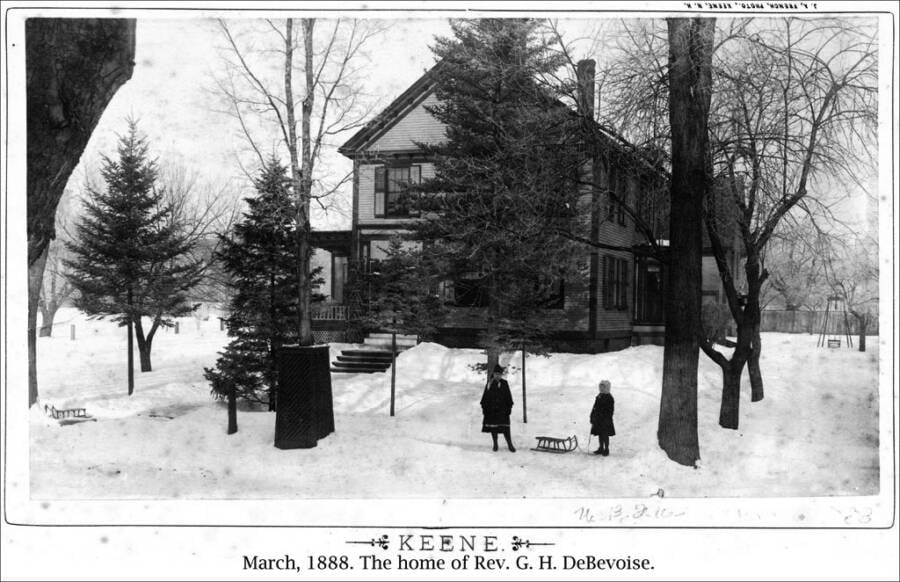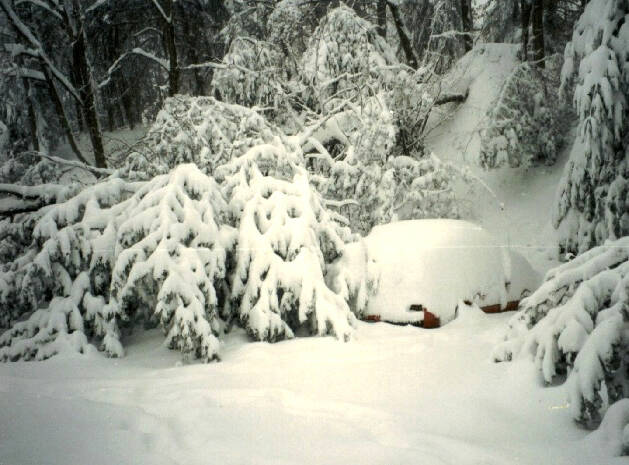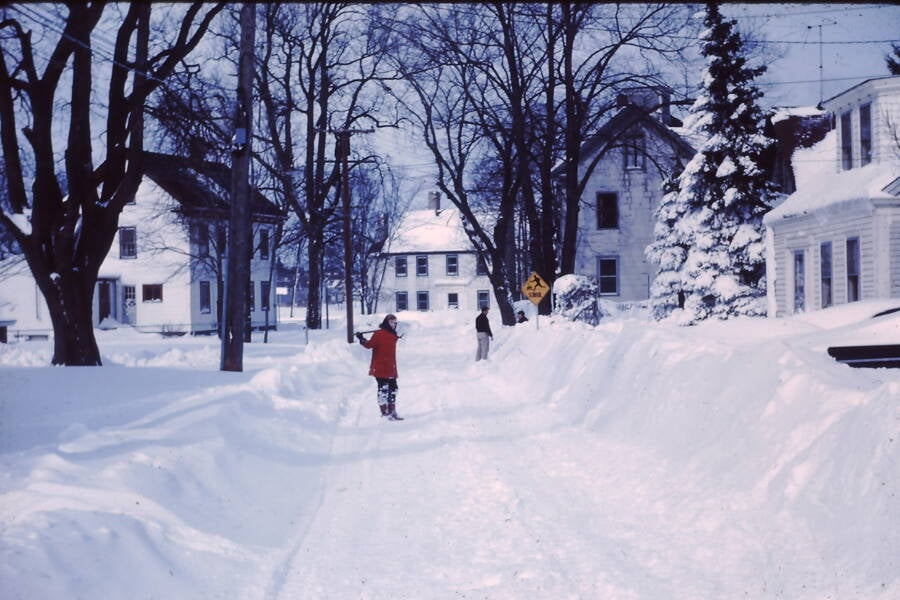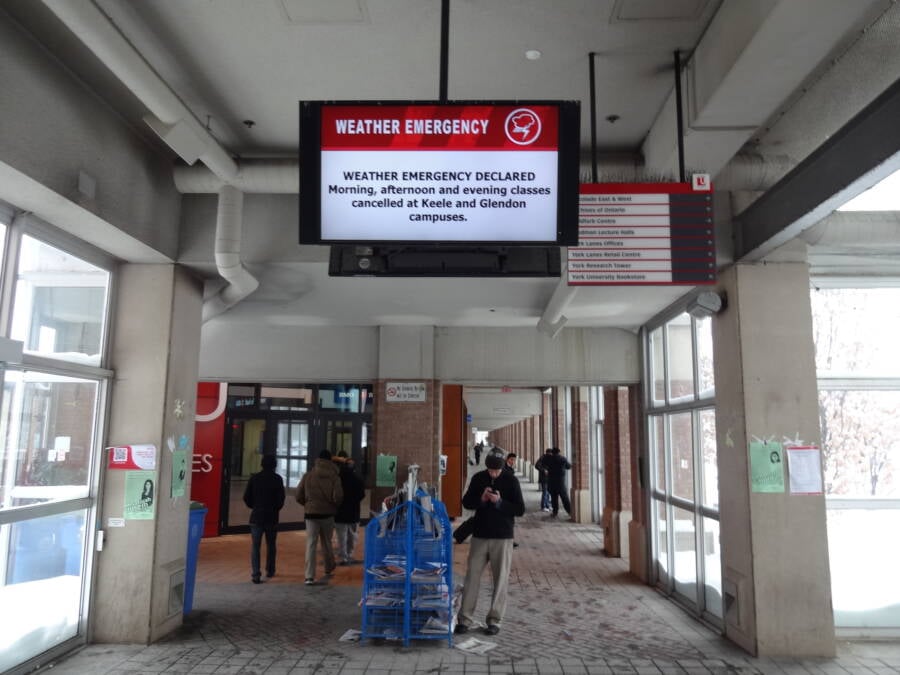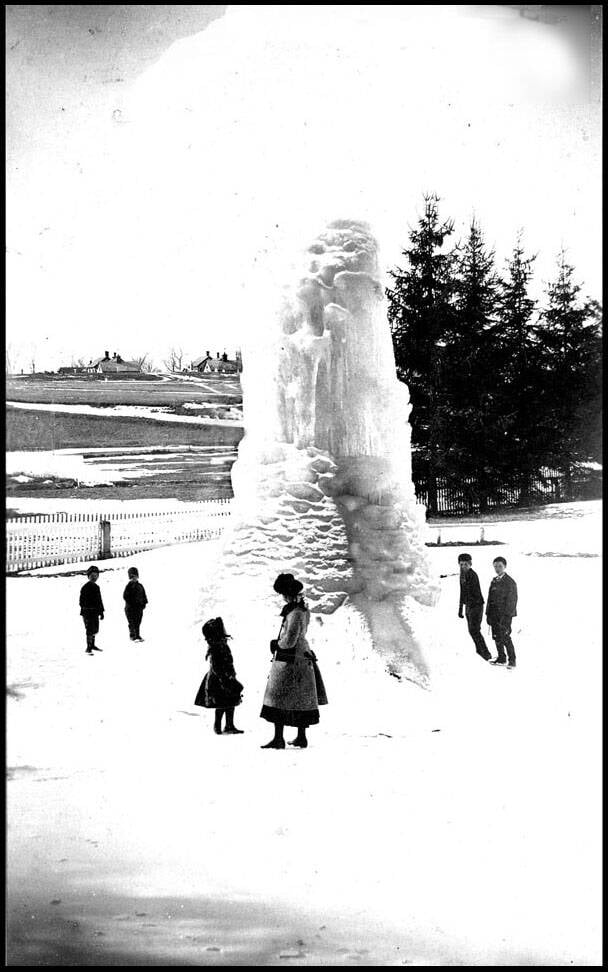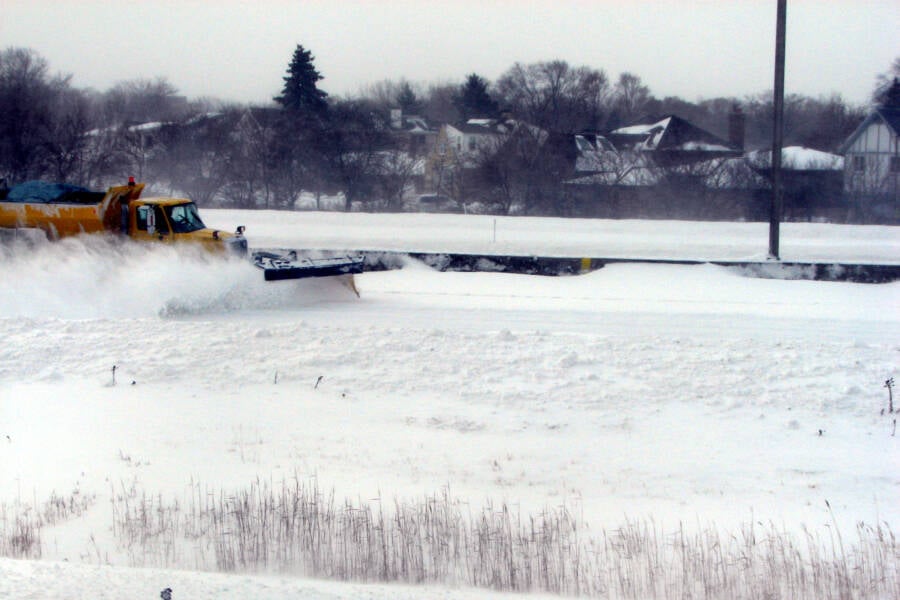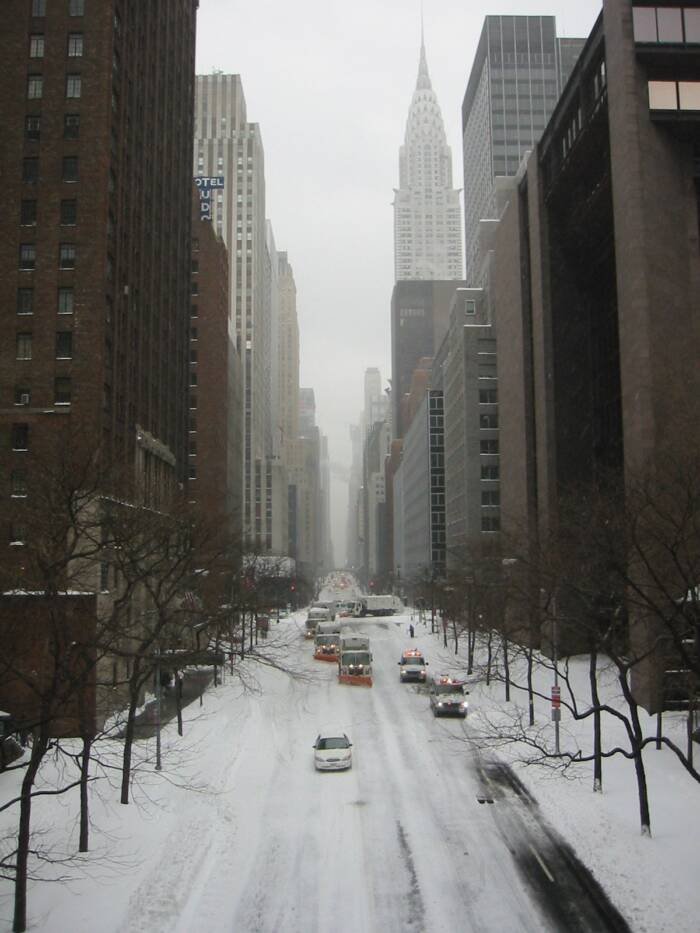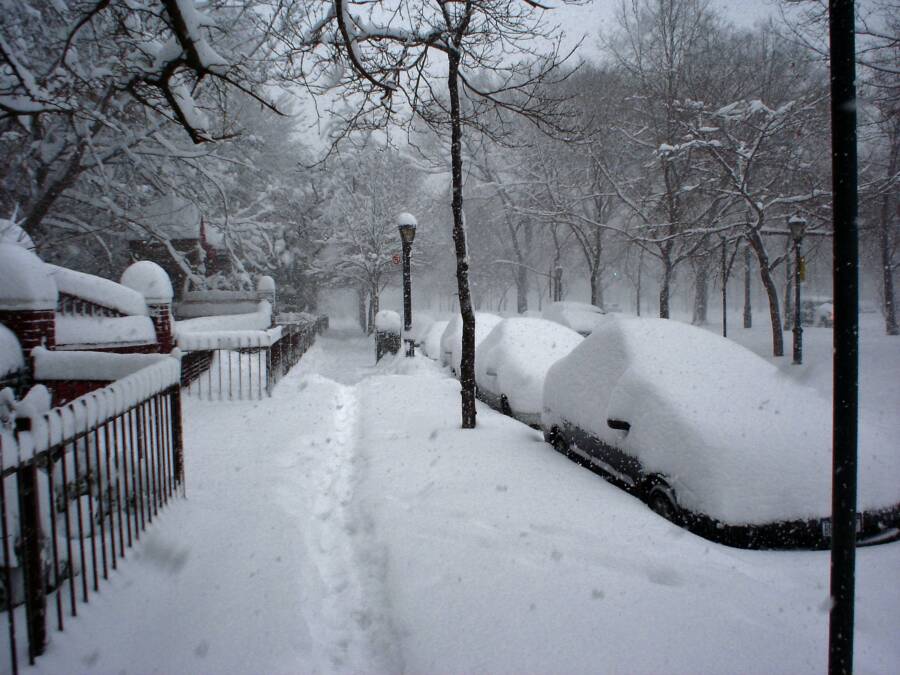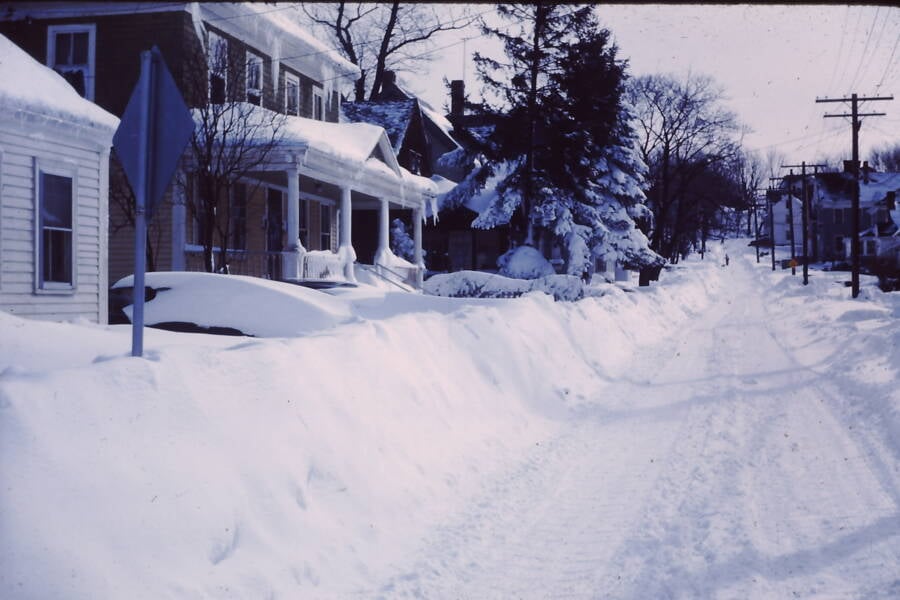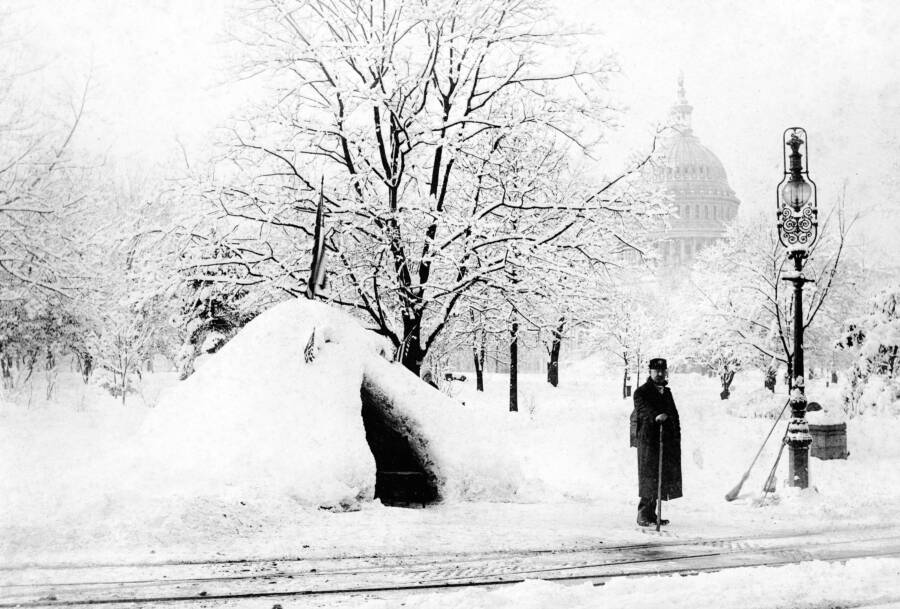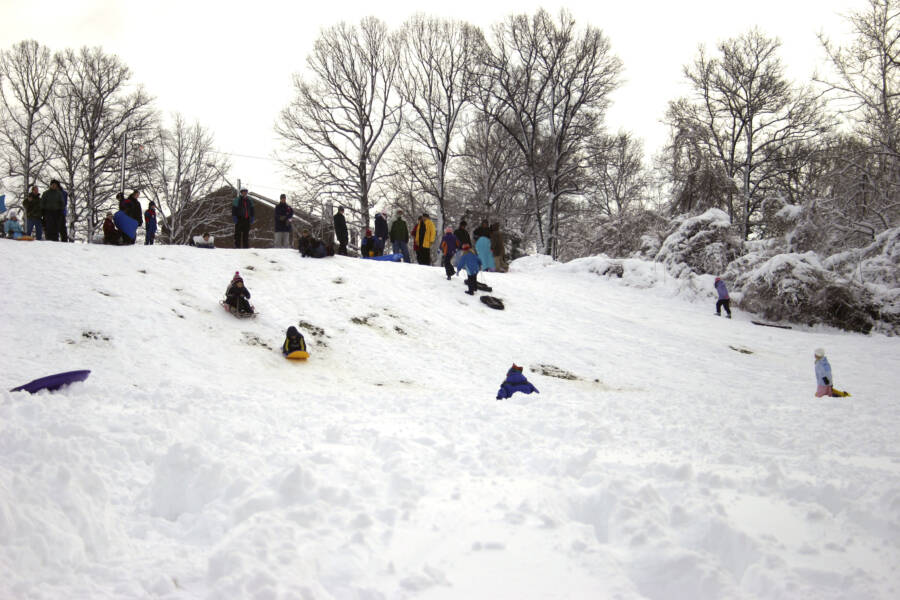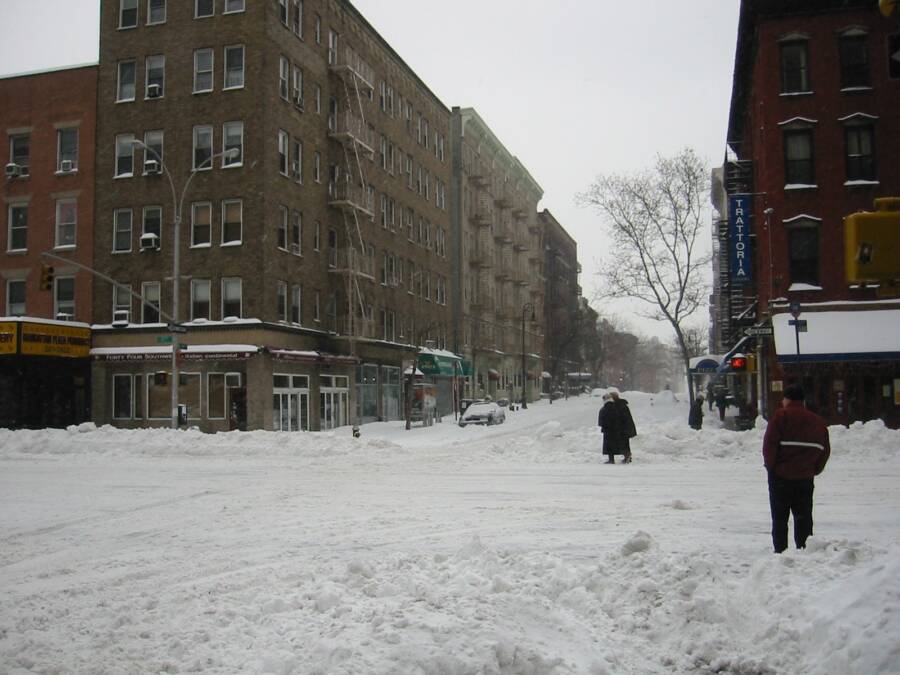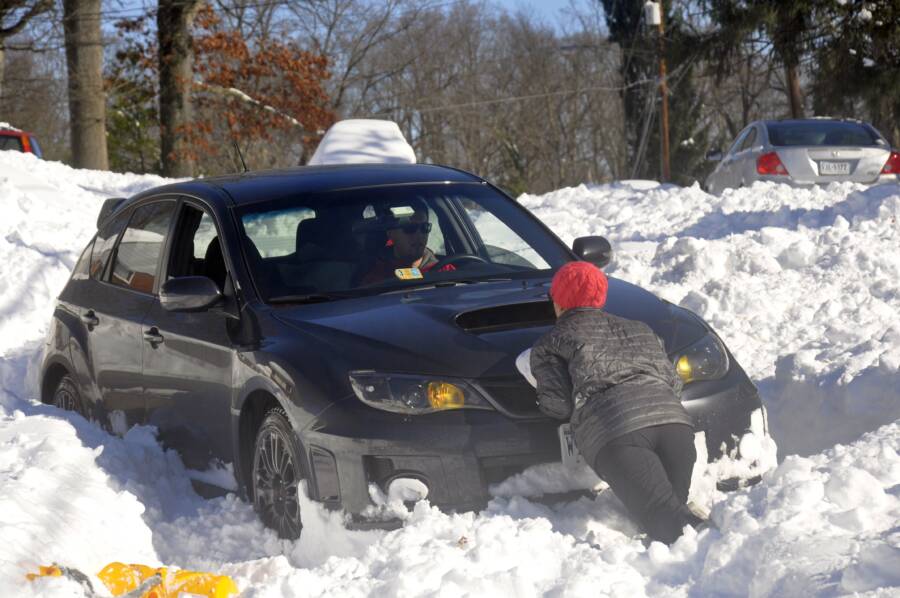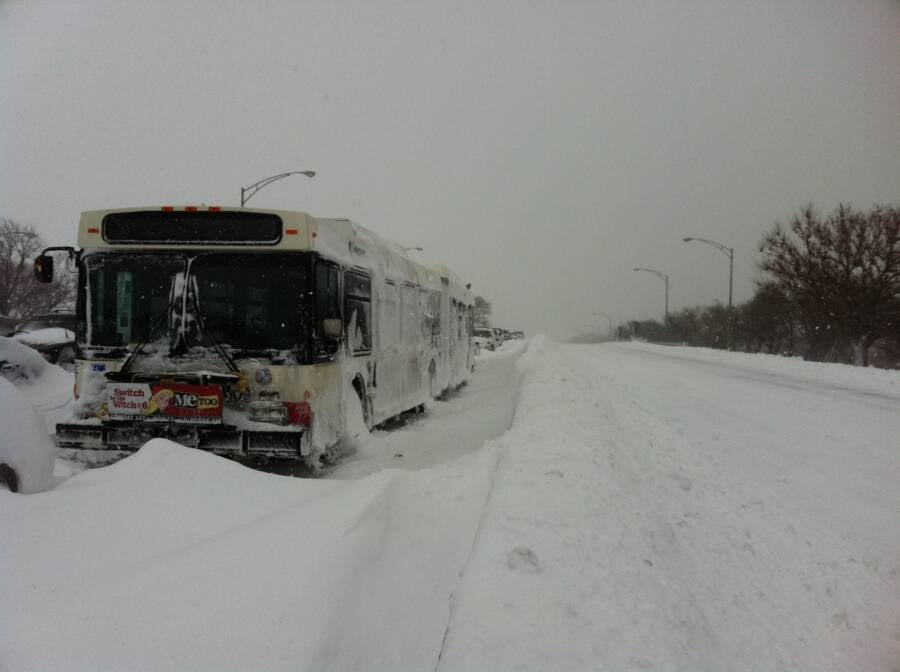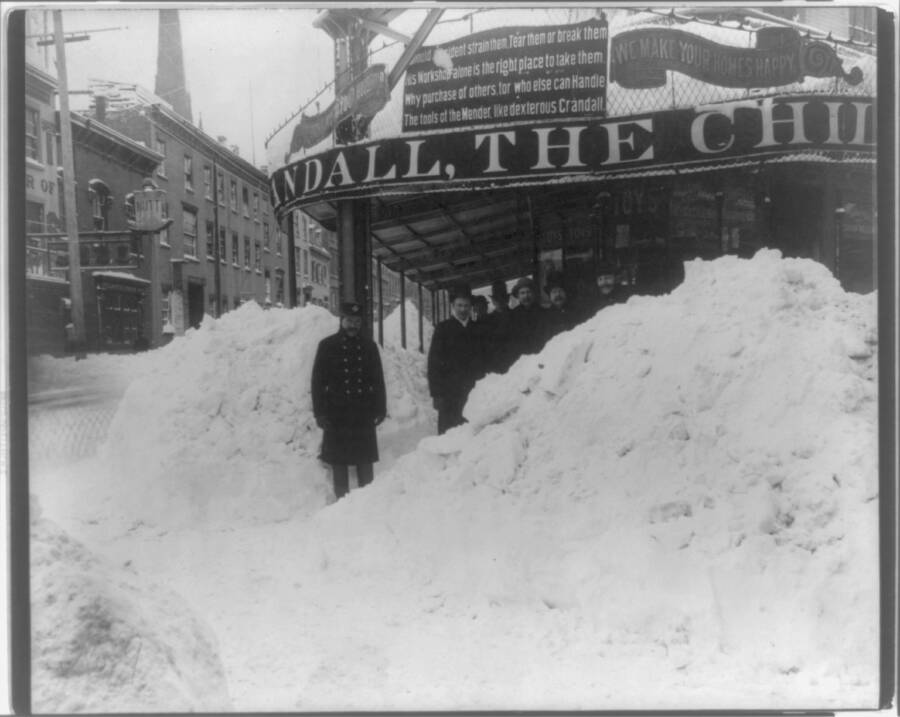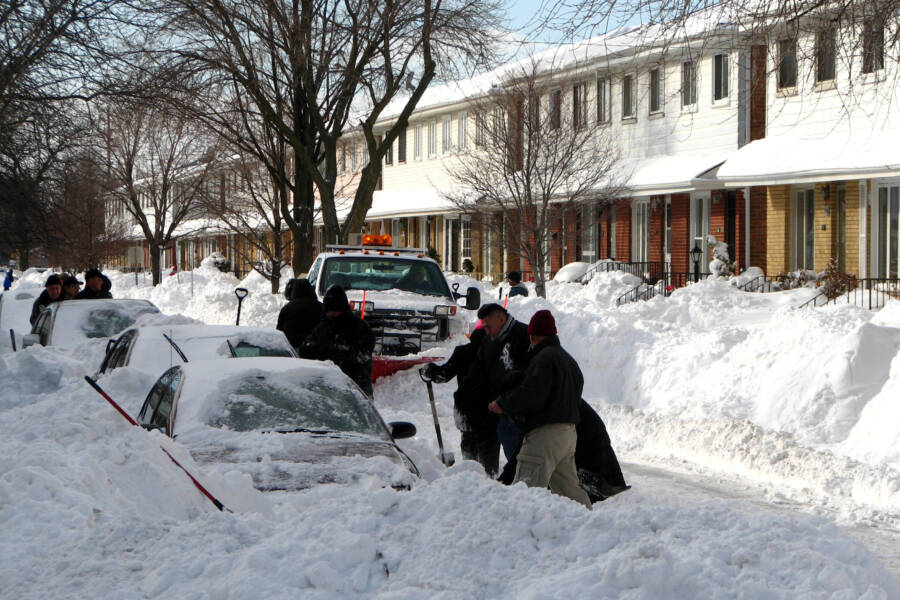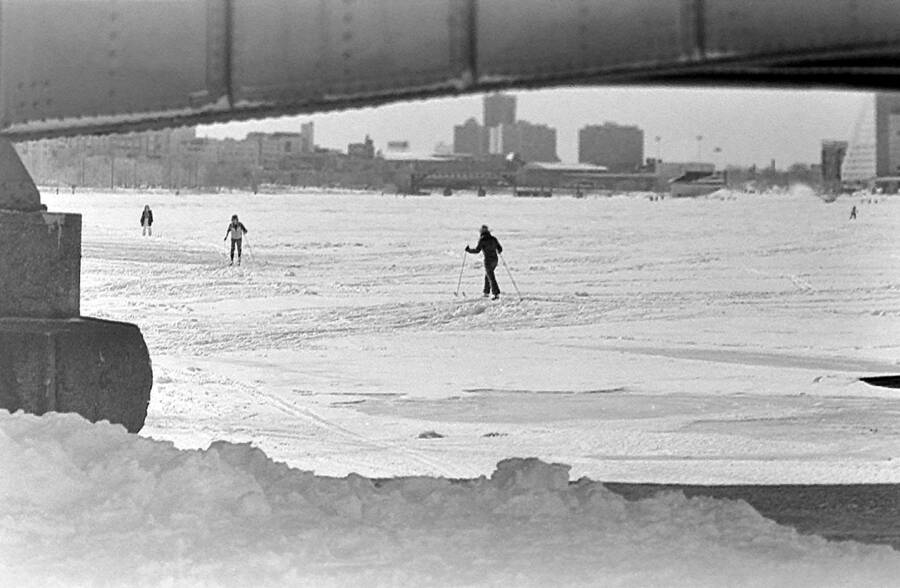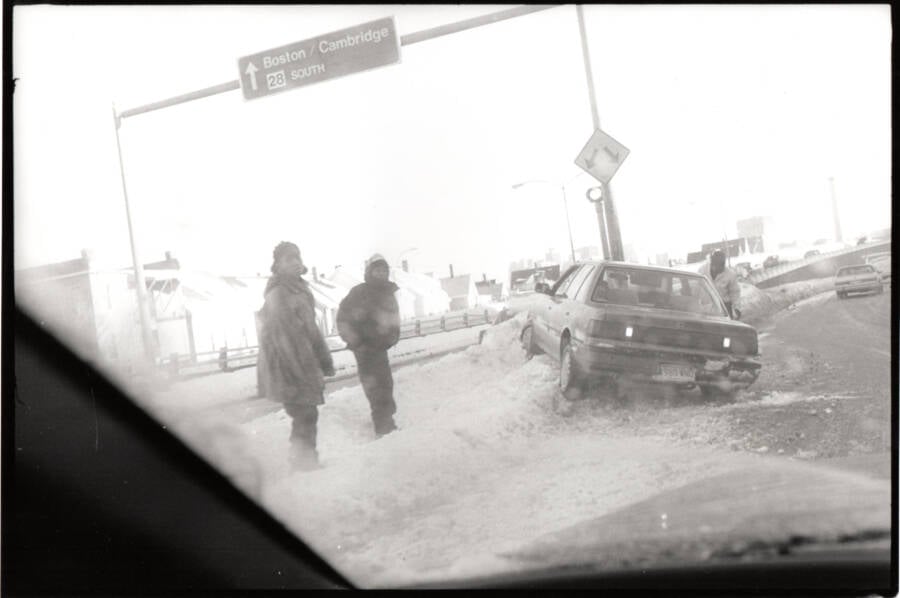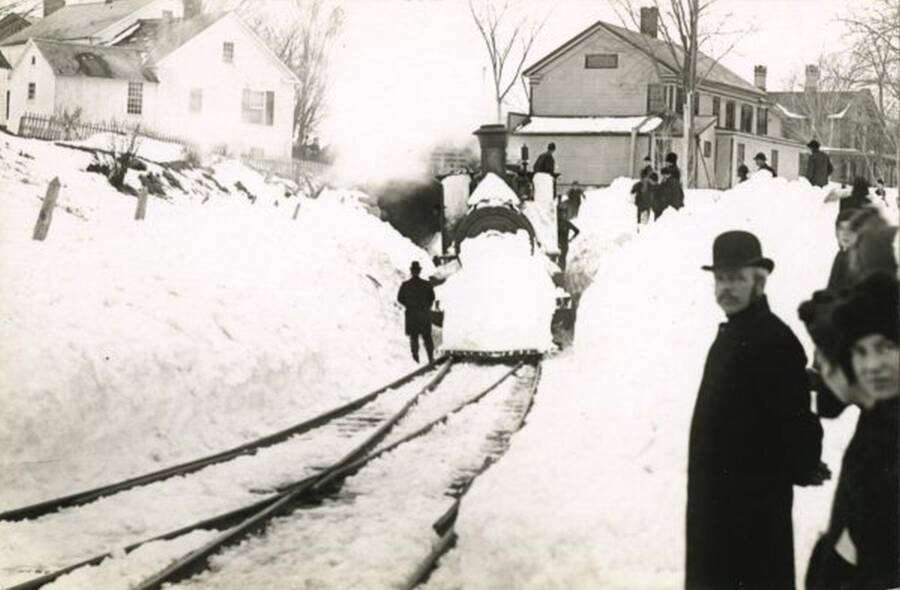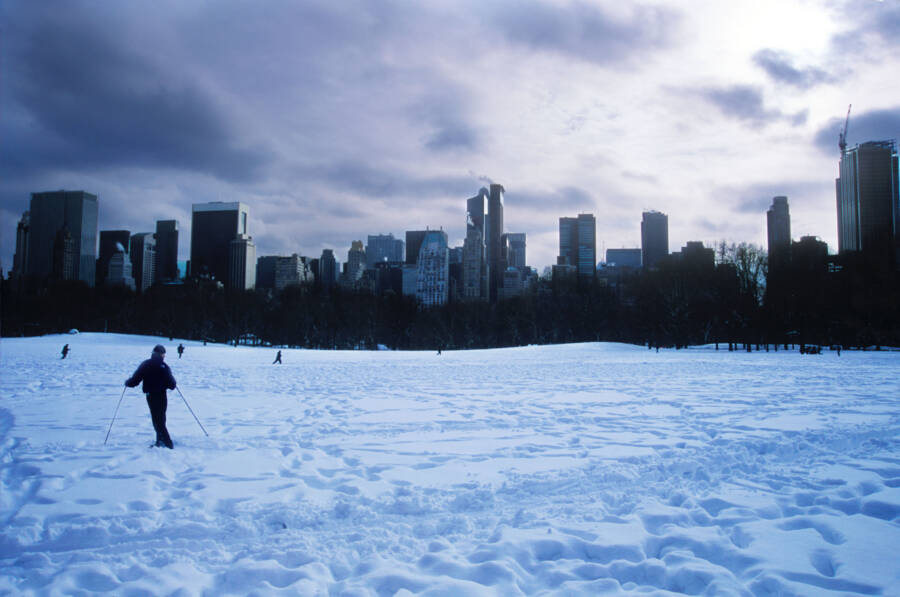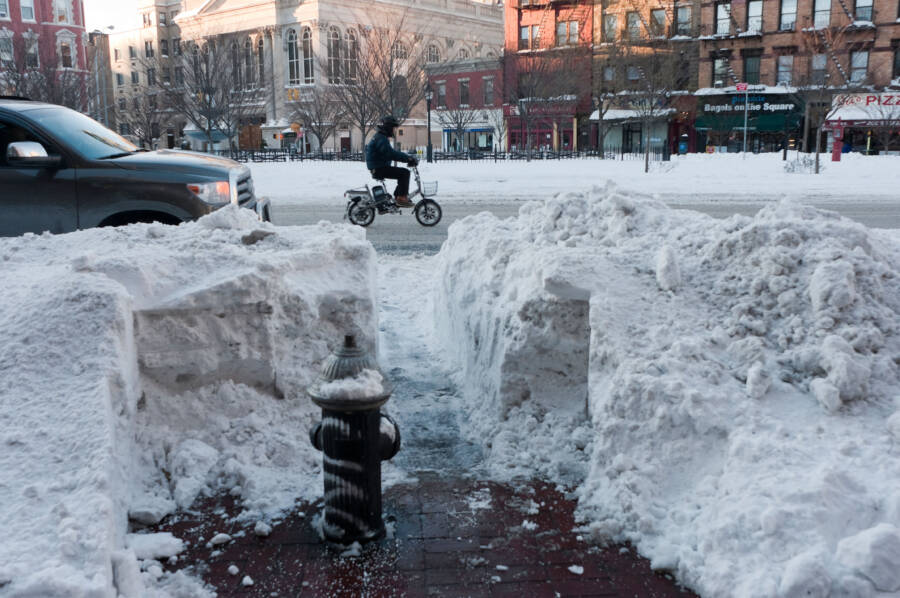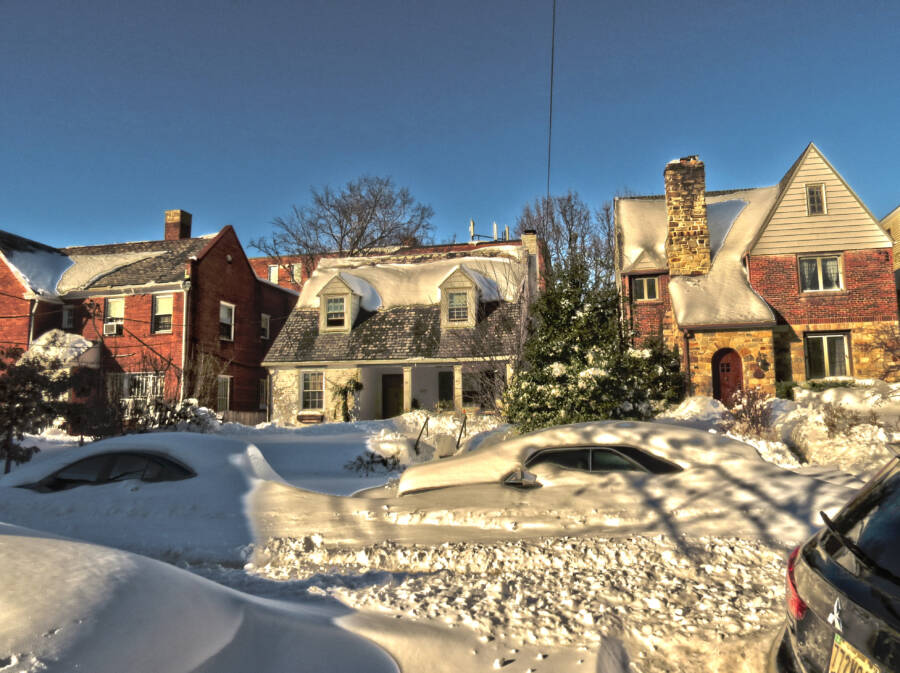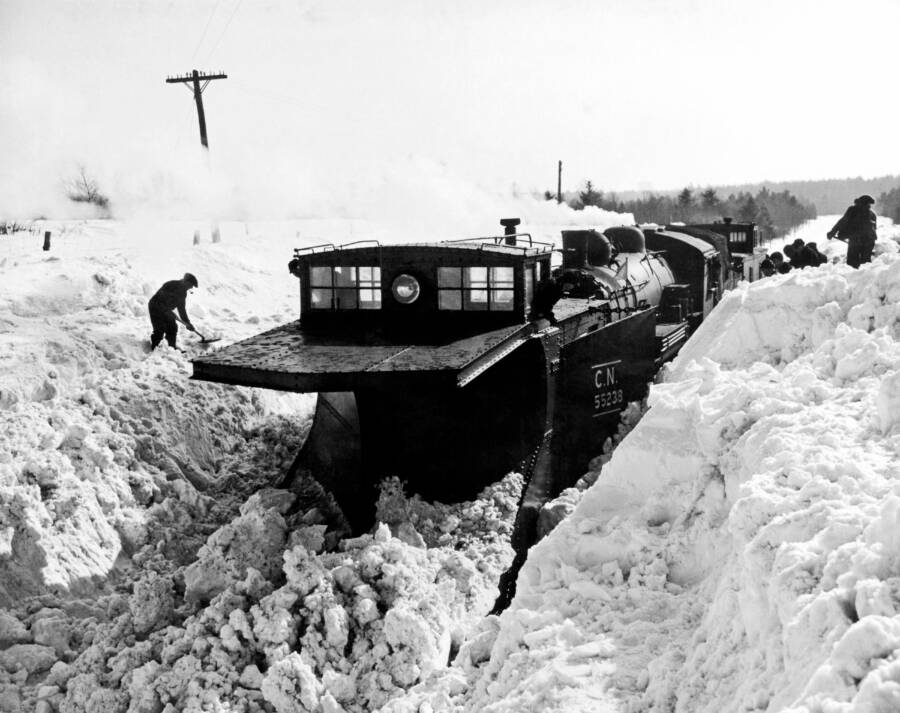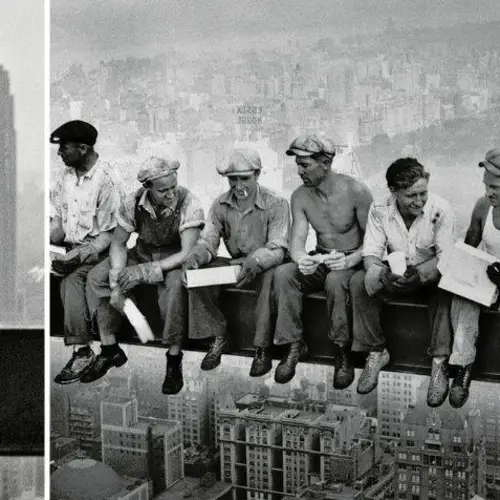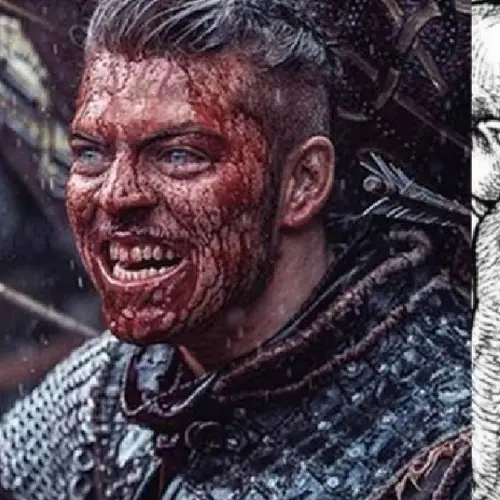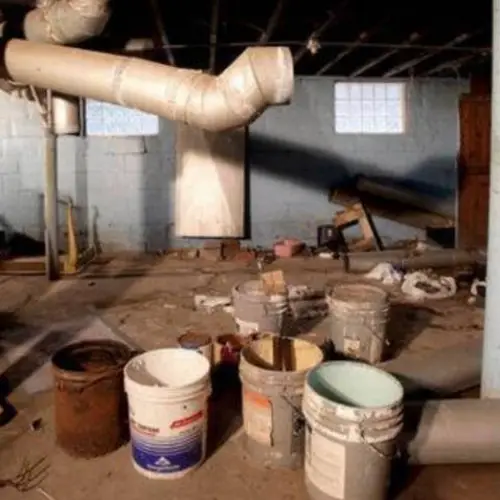From 50-foot snow drifts to 150-mph winds, step inside some of the biggest snow storms in modern history, including the Great Blizzard of 1888 and the 1993 Storm of the Century.
Throughout United States history, every generation has experienced a snow storm so devastating that it lived on in the collective memory for decades.
In January 1922, for instance, a powerful blizzard hit Washington, D.C. The snowfall was so heavy that it caused the roof of the Knickerbocker Theater to collapse, killing about 100 people who were trapped inside and injuring many more.
In the Great Blizzard of 1978, hundreds of thousands of homes in the Ohio Valley and Great Lakes regions lost power as miles of electric and telephone lines were blown down. Several people got stranded in their cars and ended up dying from carbon monoxide poisoning as they were buried in snow. And yet these storms don’t hold a candle to the deadliest snow storm in U.S. history: The Great Blizzard of 1888.
Explore this gallery of photographs from some of the worst blizzards in history to see just how beautiful and terrible Mother Nature can be.
The Great Blizzard Of 1888, One Of The Worst Blizzards In History
From March 11-14, 1888, a terrible blizzard ravaged the eastern United States, causing snowdrifts as tall as 50 feet in some areas and wind speeds as high as 85 miles per hour.
Now known as The Great Blizzard of 1888, or the Great White Hurricane, the storm is considered one of the most severe blizzards on record. For days, anywhere between 10 and 58 inches of heavy snow came falling down across New Jersey, New York, Massachusetts, Rhode Island, and Connecticut.
The blizzard caused railroads to shut down and disabled telegraph lines. People living along the East Coast were forced to remain indoors for their safety. Simply walking the streets was so dangerous that Wall Street shut down for three days straight.
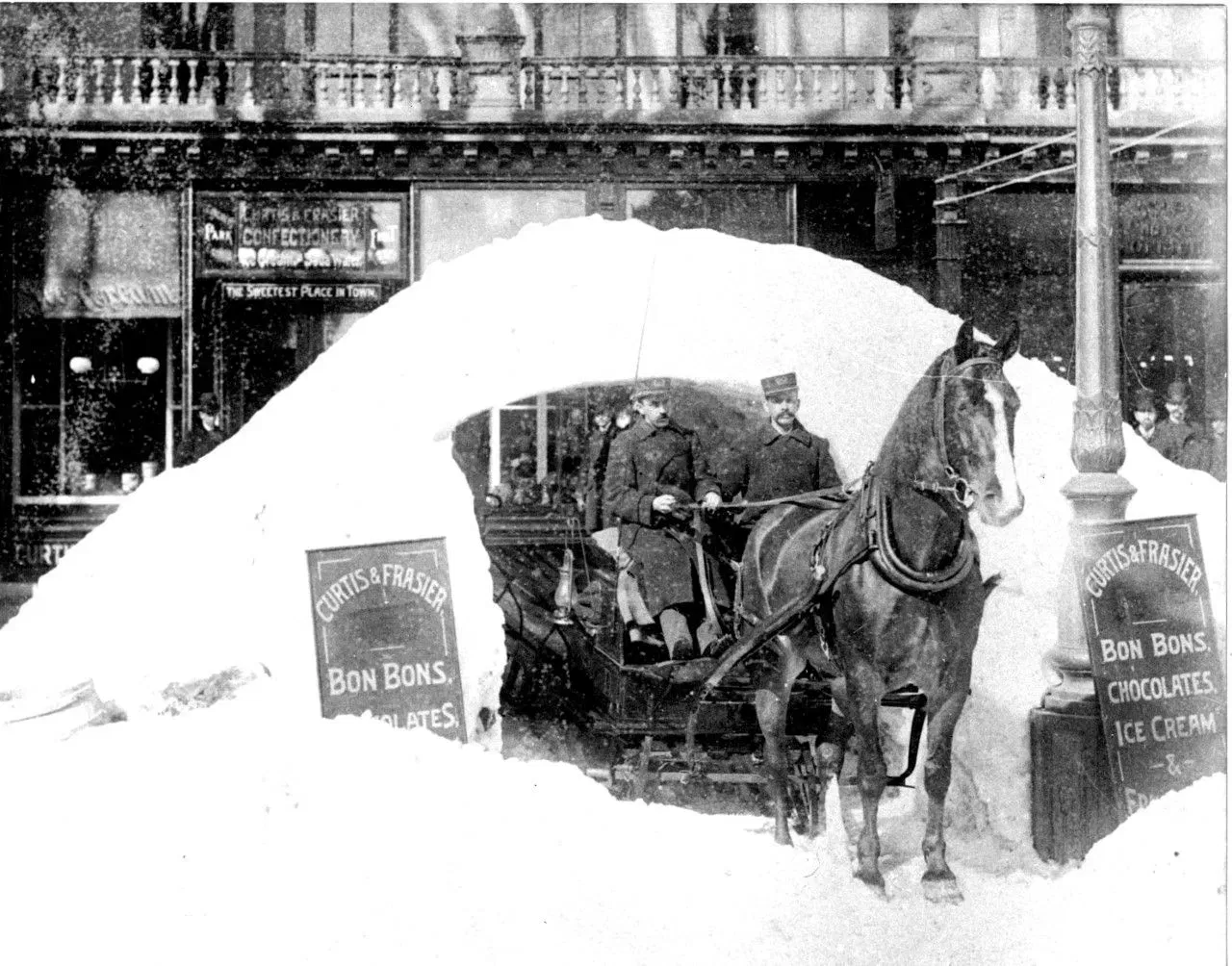
Public DomainThe Great Blizzard of 1888 was one of the deadliest blizzards in history.
And the intense Nor'easter didn't just affect those on land. According to a National Climatic Data Center report, some 200 ships were either grounded or wrecked between the Chesapeake Bay and New England in the midst of the storm, resulting in the deaths of over 100 seamen.
Many others across the East Coast died because they were buried in snow drifts or starved to death because they couldn't access food supplies. Some were electrocuted from accidentally stepping on fallen electrical wires that had been buried in the snow.
In the end, The Great Blizzard Of 1888 killed over 400 people. And the destruction didn't end after the storm had passed. As the snow began to melt, it caused severe flooding, adding another layer of trouble to those affected.
Even to this day, the Great Blizzard of 1888 is widely considered to be the worst snow storm in American history. That said, it wasn't the only intense winter storm to leave a lasting mark on the country.
The Great Appalachian Storm Of 1950
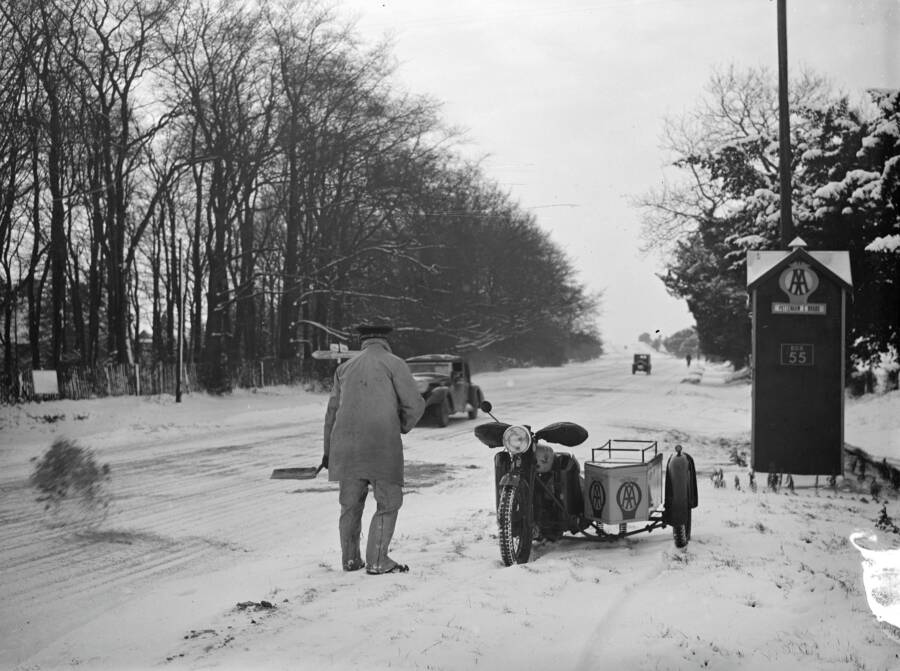
Smith Archive/Alamy Stock PhotoA massive snow storm also tore through parts of the United Kingdom in 1950.
During the week of Thanksgiving 1950, an extratropical cyclone tore through the eastern United States, causing blizzards throughout the Appalachians accompanied by hurricane-force winds that reached 150 miles per hour in some areas.
The Great Appalachian Storm of 1950 was considered a Category 5 "extreme" storm on the Regional Snowfall Index — one of just 28 storms ever to be given that categorization in the U.S. to date. The blizzard dumped as much as 62 inches of snow throughout the region. In some parts of Ohio, snow drifts were as deep as 25 feet.
The cyclone impacted 22 states in total, leading to 383 deaths. It also caused more than $66 million in damages (about $850 million today) and disrupted power for more than one million customers.
Today, the Great Appalachian Storm is considered one of the worst blizzards in modern history, and some have even called it the "Storm of the Century." However, that title was later claimed by yet another devastating storm in 1993.
The 1993 Storm Of The Century
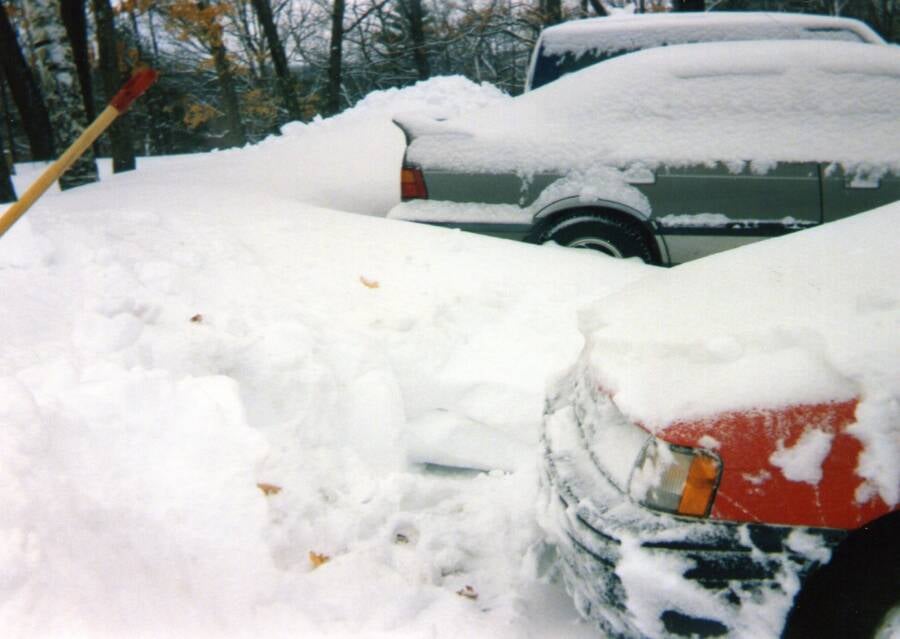
Wikimedia CommonsCars covered in snow during the 1993 Storm of the Century.
In March 1993, a massive superstorm started brewing in the Gulf of Mexico, creating tornadoes and hurricane-like conditions in Florida.
As it moved up the East Coast, it transformed into a blizzard, blanketing states as far south as Georgia and Alabama in heavy snow. Georgia alone reported snow drifts up to 35 inches tall in some areas, and in parts of Tennessee and North Carolina, more than 50 inches of snow fell. Many residents throughout the country witnessed the strange phenomenon of thundersnow amidst whiteout conditions.
The 1993 Storm of the Century, also known as the '93 Superstorm or the "No Name Storm," ultimately impacted a vast area from Canada to Central America, including 26 U.S. states. The National Oceanic and Atmospheric Administration (NOAA) estimated that roughly 40 percent of the American population experienced the effects of the blizzard.
In the end, the Storm of the Century resulted in billions of dollars in property damage and more than 300 deaths, making it one of the worst blizzards in history. The intensity of the blizzard forced airports along the East Coast to close and also caused major damage to many factories whose roofs collapsed under the weight of the snow. Offshore, the storm caused hundreds of boats to sink.
According to one Popular Mechanics report, members of the United States Coast Guard said they saw "absolutely incredible, unbelievable" sea conditions that "looked like a big washing machine. There were huge waves and spray and hail."
But as tragic as the storm's devastation was, it could have been much worse. The National Weather Service noticed the storm brewing ahead of time and put out early warnings of a "storm of historic magnitude."
Unfortunately, some local officials said they never received the message. The result was a total overhaul of how the National Weather Service and the National Oceanic and Atmospheric Administration communicates threats. NWS also developed new prediction models that have enabled them to increase their snowfall prediction accuracy from 37 percent to 75 percent.
Revisit the awe-inspiring destruction of this snow storm and others from history in the gallery above.
After reading about the worst snow storms in history, learn all about the worst hurricanes on record. Then, see why many people consider January 30 to be the worst day in history.
